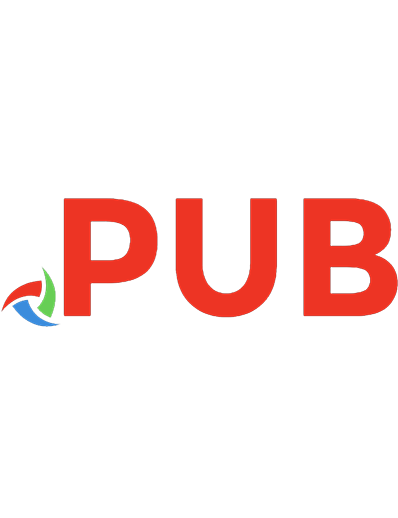Solar Energy: Technologies, Design, Modeling, and Economics 3030613062, 9783030613068
This book opens with a brief introduction to renewable energy and the advantages of solar energy systems, an overview of
1,110 186 8MB
English Pages 140 [160] Year 2020

- Author / Uploaded
- Ibrahim Moukhtar
- Adel Z. El Dein
- Adel A. Elbaset
- Yasunori Mitani
- Categories
- Technique
- Energy: Renewable Energy
Table of contents :
About This Book
Contents
Abbreviations and Symbols
Abbreviations
Symbols
List of Figures
List of Tables
1 Introduction and Literature Review
1.1 Introduction
1.2 CSP Technologies
1.2.1 World Current Status of CSP Market
1.2.2 CTR Technology
1.2.3 Parabolic Trough Technology
1.2.4 Parabolic Dish Technology
1.2.5 Linear Fresnel Reflector Technology
1.3 Thermal Energy Storage
1.4 Power Block and Steam Generator
1.5 Review of Related Researches
1.5.1 Cost of Solar Energy Technologies
1.5.2 Modeling and Design of CSP Technologies
1.5.3 ANN Application in Solar Energy Field
1.6 Problem Definition
1.7 Book Objectives
1.8 Book Outline
References
2 Solar Power Plants Design
2.1 Introduction
2.2 Methodology of CTR Design
2.2.1 Solar Angles
2.2.2 Solar Radiation
2.2.3 Solar Field Boundary
2.2.4 Tower Height Calculation
2.2.5 Calculations of Generated Electrical Power and Required Area
2.3 Methodology of PV Design
2.3.1 Calculation of Average Power for One PV Module
2.3.2 Calculation of Optimum Number of PV Modules
2.3.3 Estimation of the Number of Subsystems
2.4 Methodology of CTR/PV Hybrid System Design
2.5 Applications and Results
2.5.1 CTR Technology Design
2.5.2 PV Technology Design
2.5.3 CTR/PV Hybrid System Design
References
3 Modelling of a Central Tower Receiver Power Plant
3.1 Introduction
3.2 Description of CTR Power Plant
3.3 CTR Power Plant Mathematical Modeling
3.3.1 Solar Position and Radiation
3.3.2 Heliostat Field
3.3.3 Receiver Solar Thermal Power
3.3.4 Power Block and Steam Generator Model
3.4 Operating Algorithm Scheme of CTR Power Plant
References
4 ANN-Based CTR Modelling and Validation Results
4.1 Introduction
4.2 ANN Technique Models
4.2.1 MLP Neural Network
4.2.2 RBF Neural Network
4.2.3 GRNN Neural Network
4.3 Criteria of Optimal ANN Model
4.4 ANN Method for Estimating the Mass Flow Rate
4.4.1 Structure of ANN Model and Parameters
4.4.2 Data Preparation
4.4.3 ANN Model Creation
4.5 Validation and Analysis
4.6 Results and Discussion
References
5 Penetration Characteristics of Hybrid CSP and PV Solar Plants Economic
5.1 Introduction
5.2 Methodology
5.2.1 System Description
5.2.2 Output Power of Solar Energy Sources
5.2.3 Generation Scheduling
5.3 Simulation Results
References
6 Economic Study of Solar Energy Systems
6.1 Introduction
6.2 Methodology of Cost Analysis of CTR/PV Systems
6.2.1 System Advisor Model
6.2.2 Calculation of Electricity Price
6.3 Case Study
6.4 Results and Discussion
6.4.1 CTR System Results
6.4.2 PV System Results
6.4.3 CTR/PV Hybrid Solar System Results
6.5 Summary Results of Solar Energy Systems Cost
References
7 Conclusions and Future Works
7.1 Conclusions
7.2 Recommendation for Future Works
Appendix A Parameters of DI Method
References
Appendix B Heat Exchanger Calculation
References
![Solar Energy: Technologies, Design, Modeling, and Economics [1st ed.]
9783030613068, 9783030613075](https://dokumen.pub/img/200x200/solar-energy-technologies-design-modeling-and-economics-1st-ed-9783030613068-9783030613075.jpg)




![Sustainable Material Solutions for Solar Energy Technologies: Processing Techniques and Applications (Solar Cell Engineering) [1 ed.]
0128215925, 9780128215920](https://dokumen.pub/img/200x200/sustainable-material-solutions-for-solar-energy-technologies-processing-techniques-and-applications-solar-cell-engineering-1nbsped-0128215925-9780128215920.jpg)



![Sustainable Solar Energy Systems: Challenges and Economics for the Arab World [1 ed.]
9781681082974, 9781681082981](https://dokumen.pub/img/200x200/sustainable-solar-energy-systems-challenges-and-economics-for-the-arab-world-1nbsped-9781681082974-9781681082981.jpg)